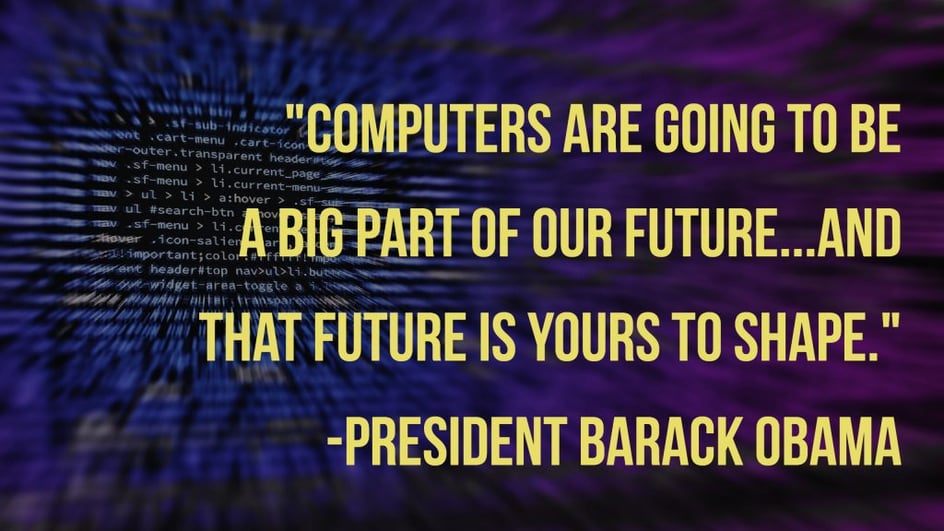Curriculum Blog
The Hour of Code
How far can you go in one hour? Hour of Code believe that you can change the world!
Next week The Hour of Code begins. The Hour of Code started as a one-hour introduction to computer science, designed to demystify "code" to show that anybody can learn the basics, and to broaden participation in the field of computer science. It has since become a worldwide effort to celebrate computer science, starting with 1-hour coding activities but expanding to all sorts of activities within school’s communities and beyond.
[video width="1280" height="720" mp4="http://curriculumblog.lgfl.net/wp-content/uploads/2017/11/The-UK-Hour-of-Code-is-Here.mp4"][/video]
The goal of the Hour of Code is not to teach anybody to become an expert programmer in one hour. The hour is designed to be accessible for all and show that coding can be both creative and fun.
You can find a range of resources for your students here; many of the resources are platform agnostic so you can use the coding platform of your choice to deliver the lesson.
You can use the award winning j2e resources to create and store all of your coding projects within an online portfolio in J2Code. Each J2Code platform has a set of detailed lesson plans which you can use to support your students during Hour of Code.
JIT has a turtle based coding language, you code freely or use sprites and backgrounds to create simple story animations, perfect for Reception and KS1. Visual is a block based language in which you can freely code to create more complex coding outcomes for KS2. You can also convert, store and share Scratch files within J2E and for more complex procedures you can use Logo a script based platform that can be used for KS3. The Micro Bit coding platform can also be used to create a physical computing project.
For those of you short of time that can’t look through all the suggested projects, I have cherry-picked a handful of creative projects to try with your students.
My top picks for The Hour of Code:
- Google have worked with Scratch so that your students can create your own animated Google Doodle, you can make the logo come to life, making the letters tell a story or create a game.
- Microsoft have created exciting 3 Minecraft adventures to code your way through, and finally….
- Tickle are offering an interesting new take on Coding using AR, the Tickle app grants students the potential to code interaction between screen and their physical surrounding.
We have also come up with our own simple Hour of Code project, can you help make a LGfL animated doodle? Below is a simple example but we know you can do better! We don’t mind which coding platform you use but here is the project in Scratch to get you started! The most creative use of code will win a small grab bag of computing goodies, just share your examples on social media and tag LGfL in to the post.
[video width="480" height="360" mp4="http://curriculumblog.lgfl.net/wp-content/uploads/2017/11/LGfL-Logo-challenge.mp4"][/video]
The Hour of Code happens during Computer Science Education Week. This is held annually in recognition of the birthday of computing pioneer Admiral Grace Murray Hopper, an inspiring female figure in the world of computing science. For more inspirational female computer scientists, LGfL have created Women in Computing which recognises the many and varied achievements of women in computer science and hopes to inspire future programmers.
#hourofcode resources are a great way to get less confident teachers to just have a go. It's only an hour! -Miles Berry
Remember hour of code does not cover all of the Computing Science strand of the computer curriculum but does offer a range of highly structured fun activities to help both students and teachers gain confidence with computing science; coding isn’t just for an hour it should be an ongoing journey.
We would love to see and share your amazing Hour of code projects, you can post them on Twitter or Facebook and with the hashtag #HourofCode

